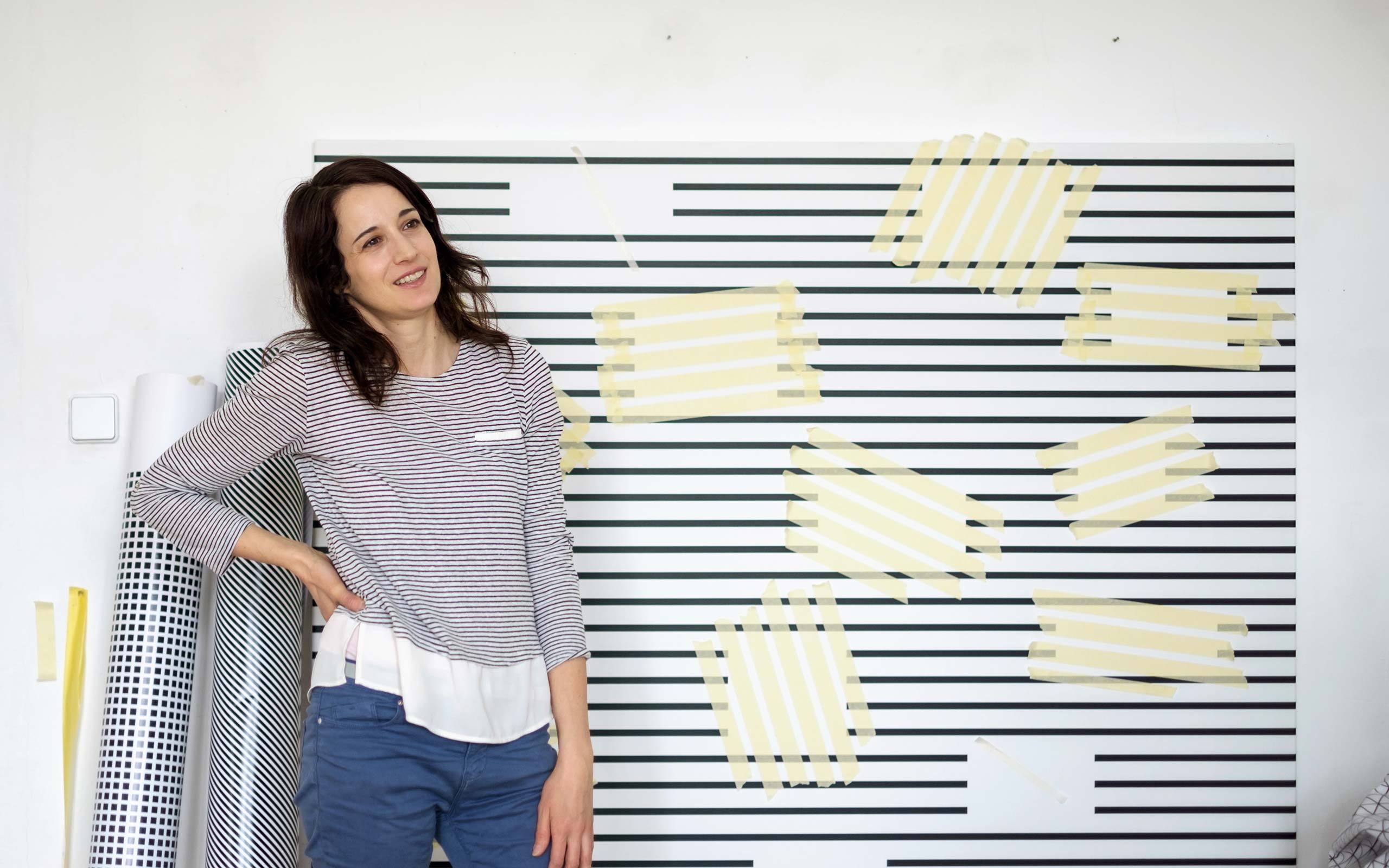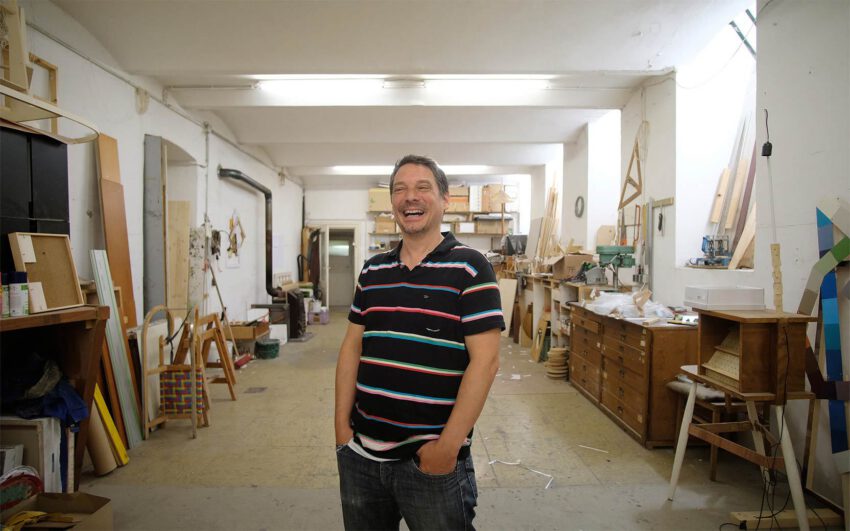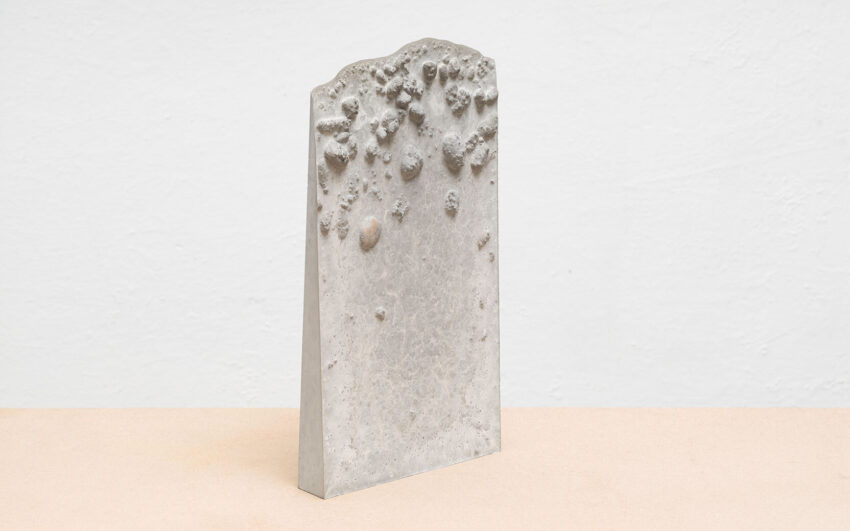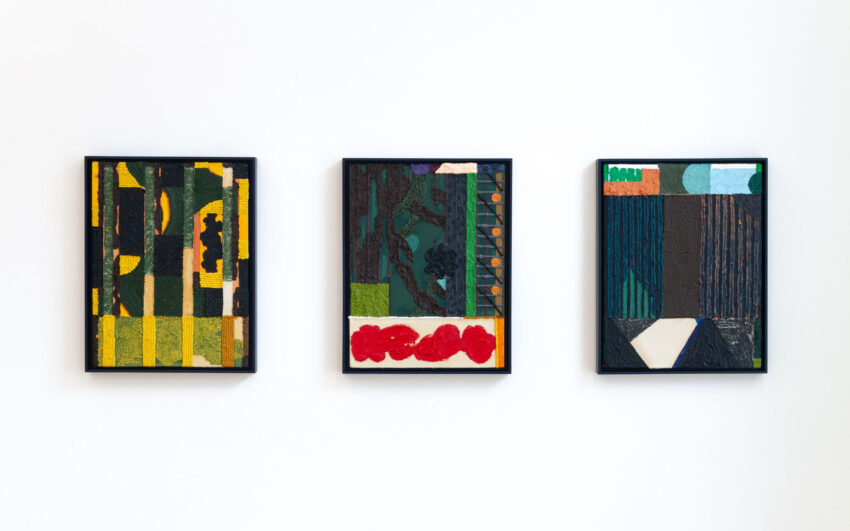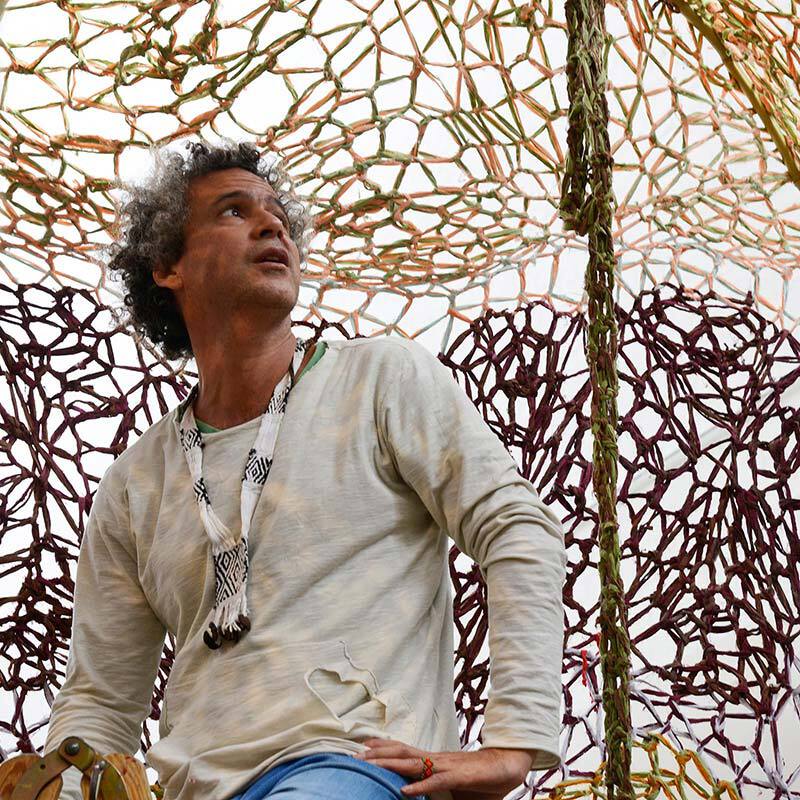Esther Stocker creates boundless spaces in which the viewer may become lost. In a reduced language of form consisting of black and white lines and grids she explores formal boundaries and spatial structures. During our studio visit we spoke with Esther about how her work is created, what roles chance and logic play, and why in the end esthetics always win.
Esther you have received international acclaim for your spatial installations. Originally, however, your background is painting. Do you design your spaces with a computer, or are they created in your mind?
It is true that I come from painting and consider myself also a painter. I don’t believe that many people are even familiar with my paintings, although I have been painting for ten years, before I started making installations and sculptures. The ideas for the spatial installations emerge from my paintings. They exist in my mind. I always start with a drawing, sometimes I build a model but not always.
Do you create these sketches after you have seen the actual space?
No. I actually prefer not to be influenced by the space. I rather try to ignore it a little. My intention is to create spatial installations in which the viewer no longer can tell where the floor ends and the wall begins. Ideally it is an infinite surface, a boundless space. The contrast is very strong and everything is either black or white.
You just mentioned the importance of black and white in your work. Aren’t you using any colors in your work?
I have been working with black and white since my studies. Originally I’ve still worked with a gray scale, but in the course of time I’ve moved away from it. Recently, I did a couple of studies using color, but gave it up very quickly. It’s not that I don’t like color. I find it very fascinating, and I admire painters who have mastered it. But I know not enough about it.
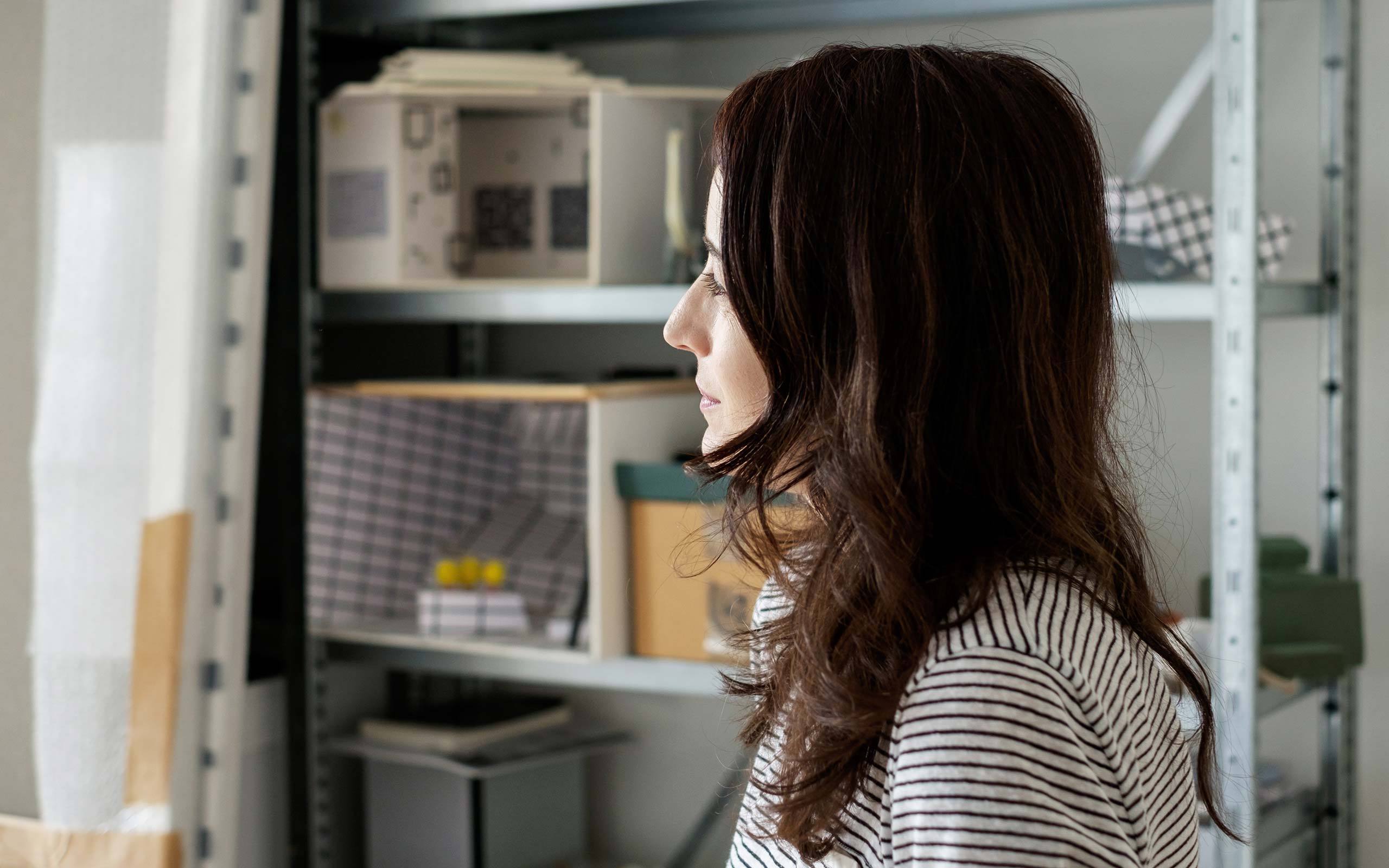
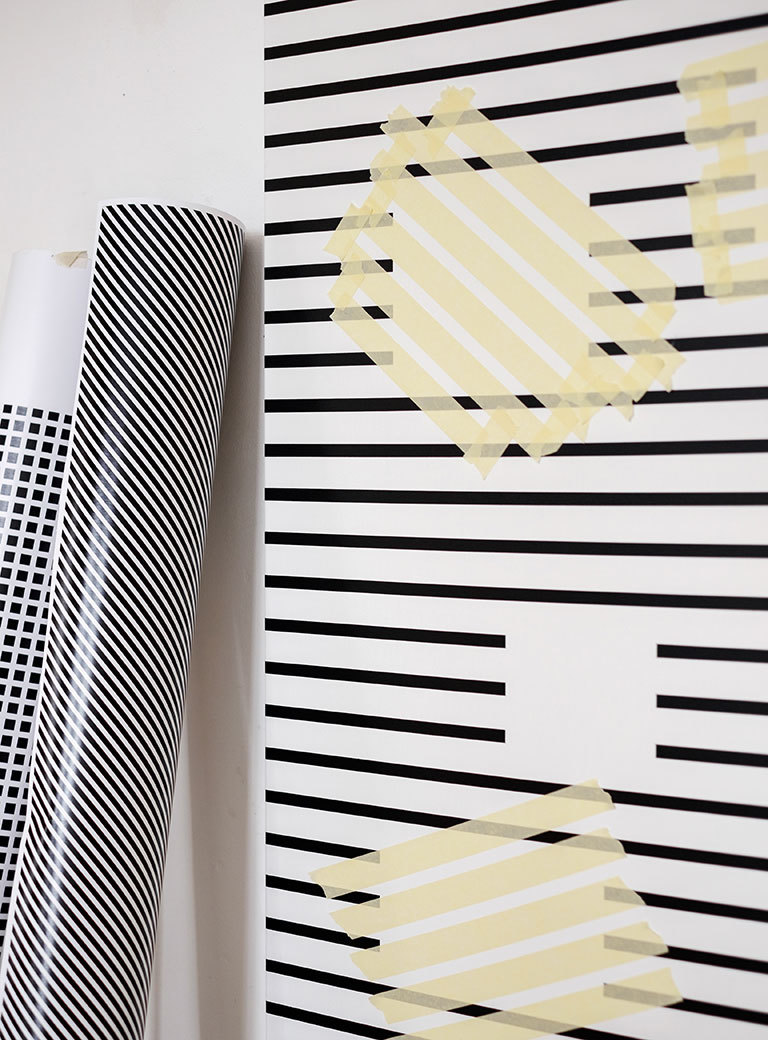
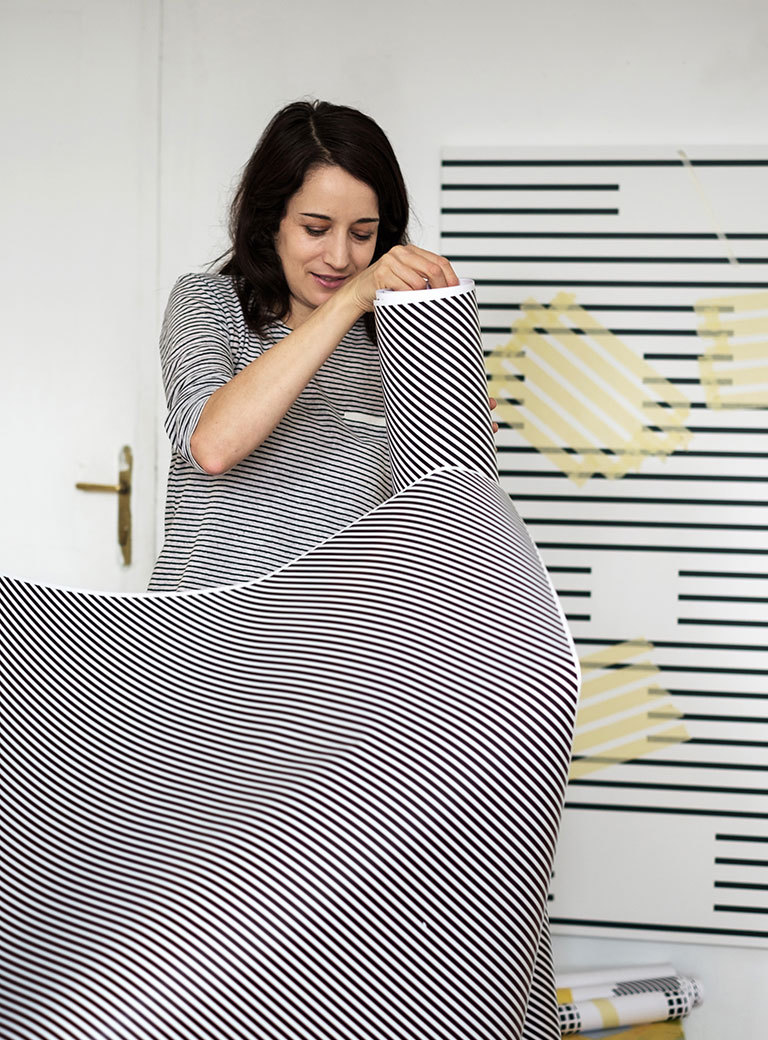
What fascinates you about black and white?
For me the experience with black and white is very physical. I am often asked whether I have problems with black and white, whether I become dizzy while working. I believe that color is much more difficult, particularly for large surfaces. It is said that the so-called colorists, as they were once called, think in color. Color is never on my mind. It is simply not in my head, I see only lines, strokes, and grids. When I look at a picture I can imagine a lot, but color isn’t important.
Many of your sculptures are made from paper, right?
Yes, I have always loved paper very much. I have a passion for notebooks. It is almost unbelievable what one can make with paper. The properties of paper are highly civilized. It was a very exciting realization for me, that one can’t imitate paper at all – very difficult and only with enormous cost. Not all my sculptures are made of paper. If they are intended for exterior spaces I make them from tarpaulin.
How do your creased sculptures emerge?
Before the paper is creased I dip it in resin. I can’t do it in my studio, because it is very toxic. Depending on their size I may need help. The resin fixes the form so it doesn’t change when it’s touched.
How did you come to art?
I am asked this often, and every time I think of it anew. I have always liked studios very much. Even as a child, it seemed to me that there must exist a very special form of freedom in a studio. To me much of what happens in studios, the process of that which is controlled and at the same time uncontrolled, exudes a great freedom. There is so much to discover and to do in studios – at least in studios without computers. Some things there are half-completed, there is a smell of work materials. For me it is a true sensory pleasure. And I believe that I am also a craftswoman and fit well into this environment. Even today, the installation of an exhibition is more exciting to me than the exhibition opening.

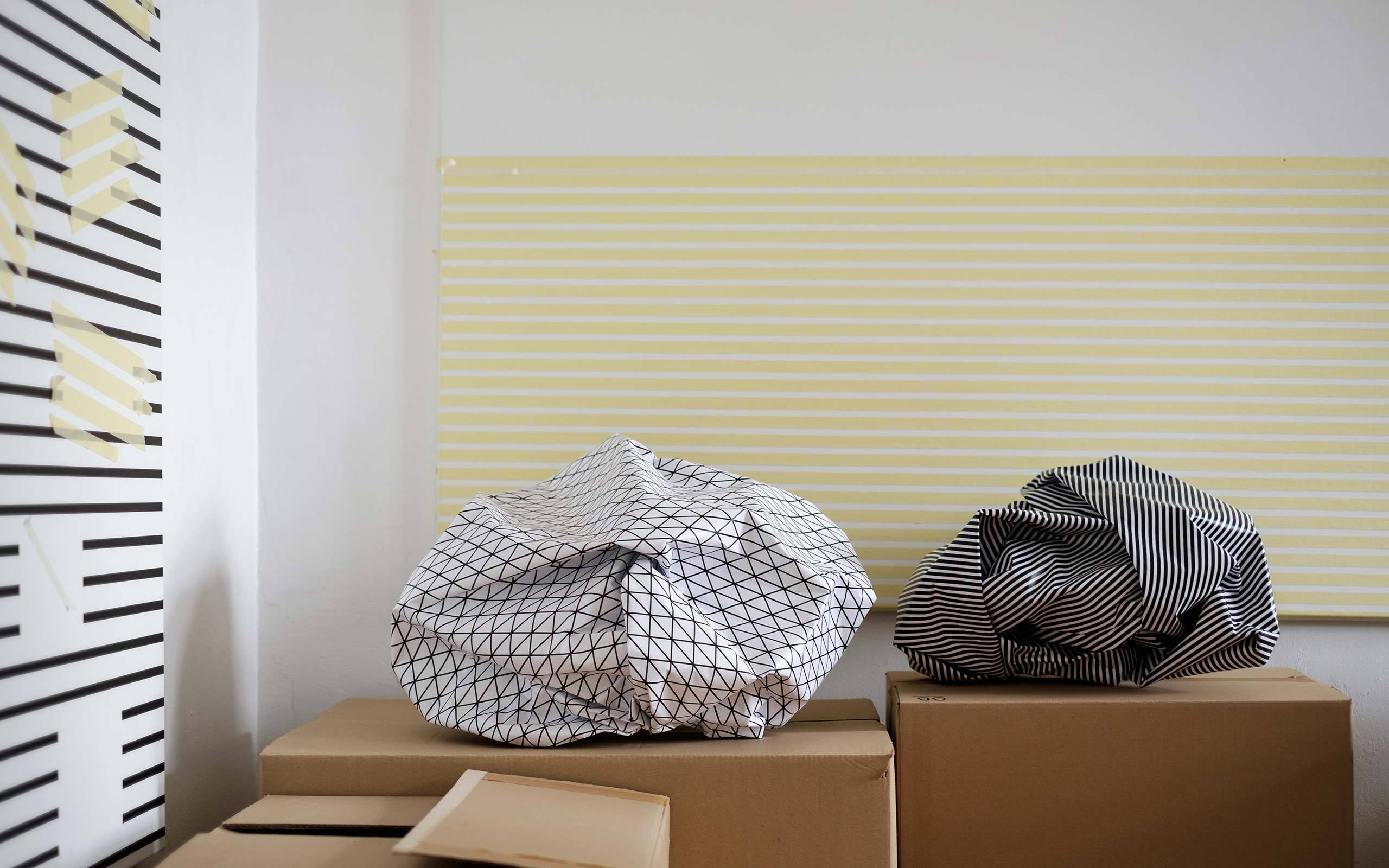
You came to Vienna in order to study art. Was there a point where it became clear to you that you wanted to earn your living with art?
I knew that I had to stay in the arts, for me it was a necessity. During my studies for example I worked in the social sector. But there was a moment in which I realized that I could no longer do art on the side, therefore, I decided to take the risk and only make art. In the beginning, there was the possibility of obtaining scholarships and that helped a great deal; nevertheless, initially I have had to work part time.
How does it feel today, seventeen years after your studies, to be represented in the high echelons of art ranking?
I can still very well remember the first ranking in which I appeared. At the time I had doubts, because I could hardly support myself by my art, but I was already represented in a ranking. These days, I no longer notice that. For some people these rankings are a guideline. But one doesn’t have to take them too seriously.
Your work is at the interface between fine art and applied art. Have any fashion labels invited you to collaborate with them?
Not really from fashion firms, but I am often asked by design magazines, among them many from Asia. I have just been invited to Japan. Fashion and art are increasingly less separated there. In the future, I don’t exclude a collaboration in the fashion sector, but I don’t really know if I am suited for it, although I would be interested in testing out this interface.
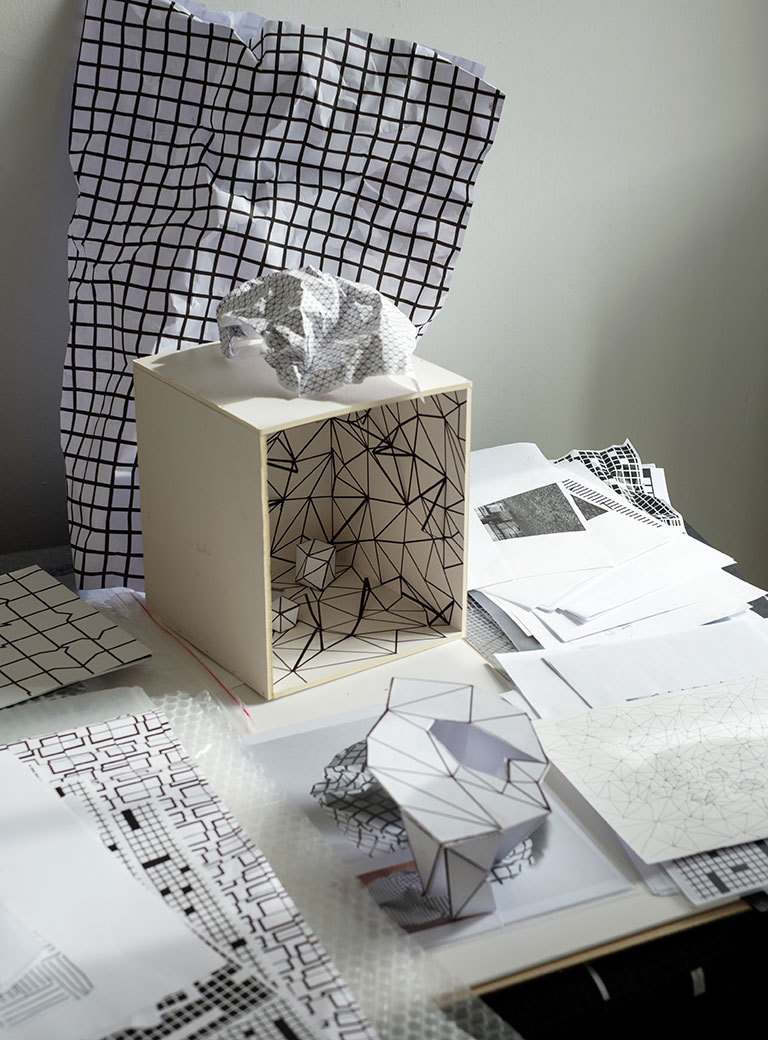
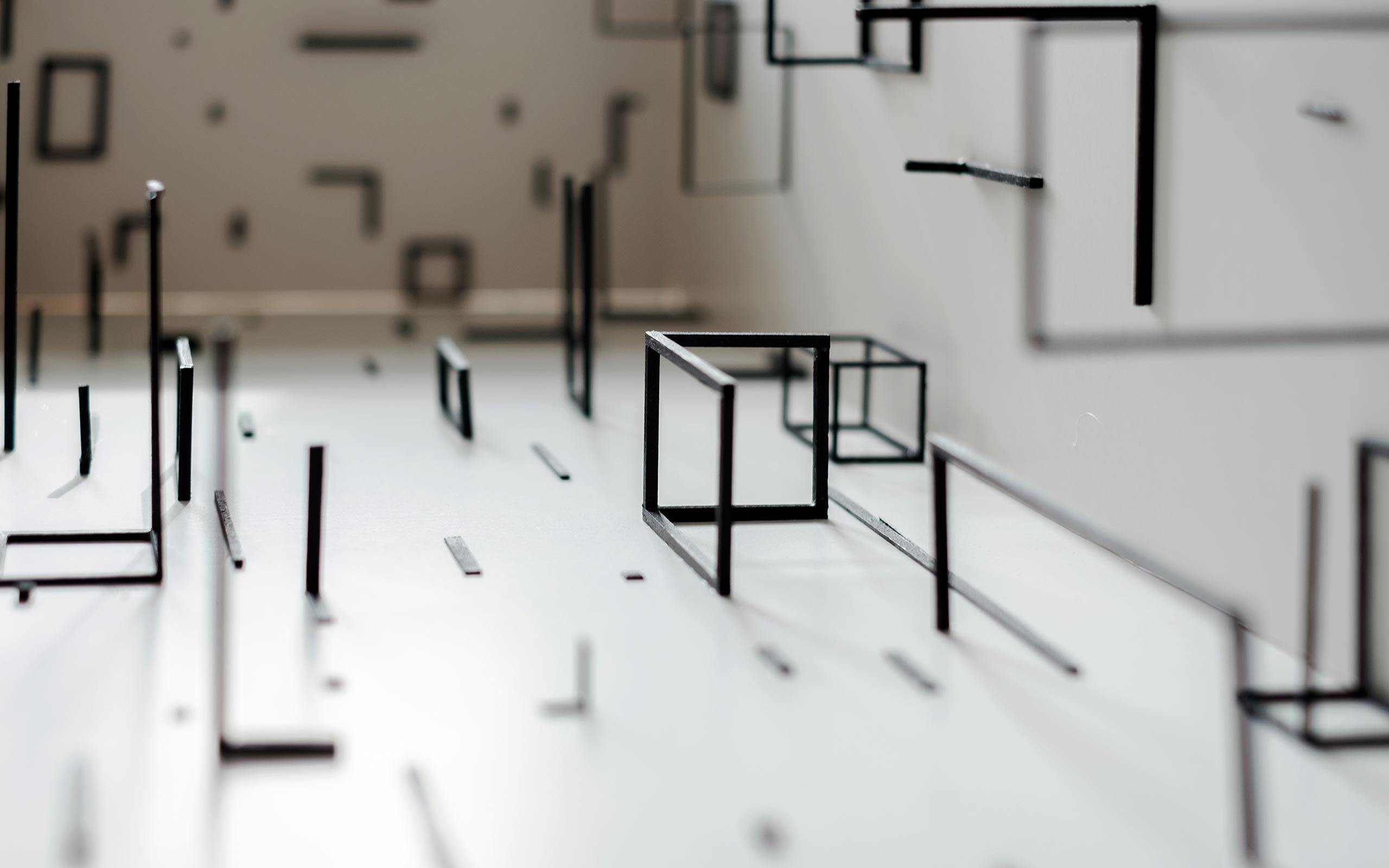
How would you describe your work to someone, who doesn’t know you?
In England I often hear, “You are the one with the black and white stuff,” (laughs) or “You are the one with the little boxes and lines”. It is absolutely true and to the point. And, put simply, this is what I do. In my pictures and installations I often work with grids and lines, black and white.
Is it okay for you, if some people describe you as “the one with the black-and-white grids”?
Of course, I say it myself! (laughs) Many think that my work is difficult to explain. I don’t think so. However, it is clear to me that my work has a greater artistic meaning to me. But I don’t want to make it too complicated, and for me there is also no reason to describe it differently than how it appears to others. Perhaps I truly trust simplicity more. For me it contains a lot – all the imagination, the fiction, the enormous world of ideas.
With the grid structure and the severity of the black and white, your work can appear very exacting and planned. Does randomness play a role in your work at all?
I don’t really believe in randomness and chance. For me randomness is hard to perceive. I would say it doesn’t play a big role, though it may enter my work in a way that I can’t fully control.
So it is rather about esthetics than randomness?
When I build my installations I often think about logic and esthetics. This may be easier in conceptual art, because it is about a logical system – not about beauty. Although I am quite interested in logic, ultimately esthetics has the last word.
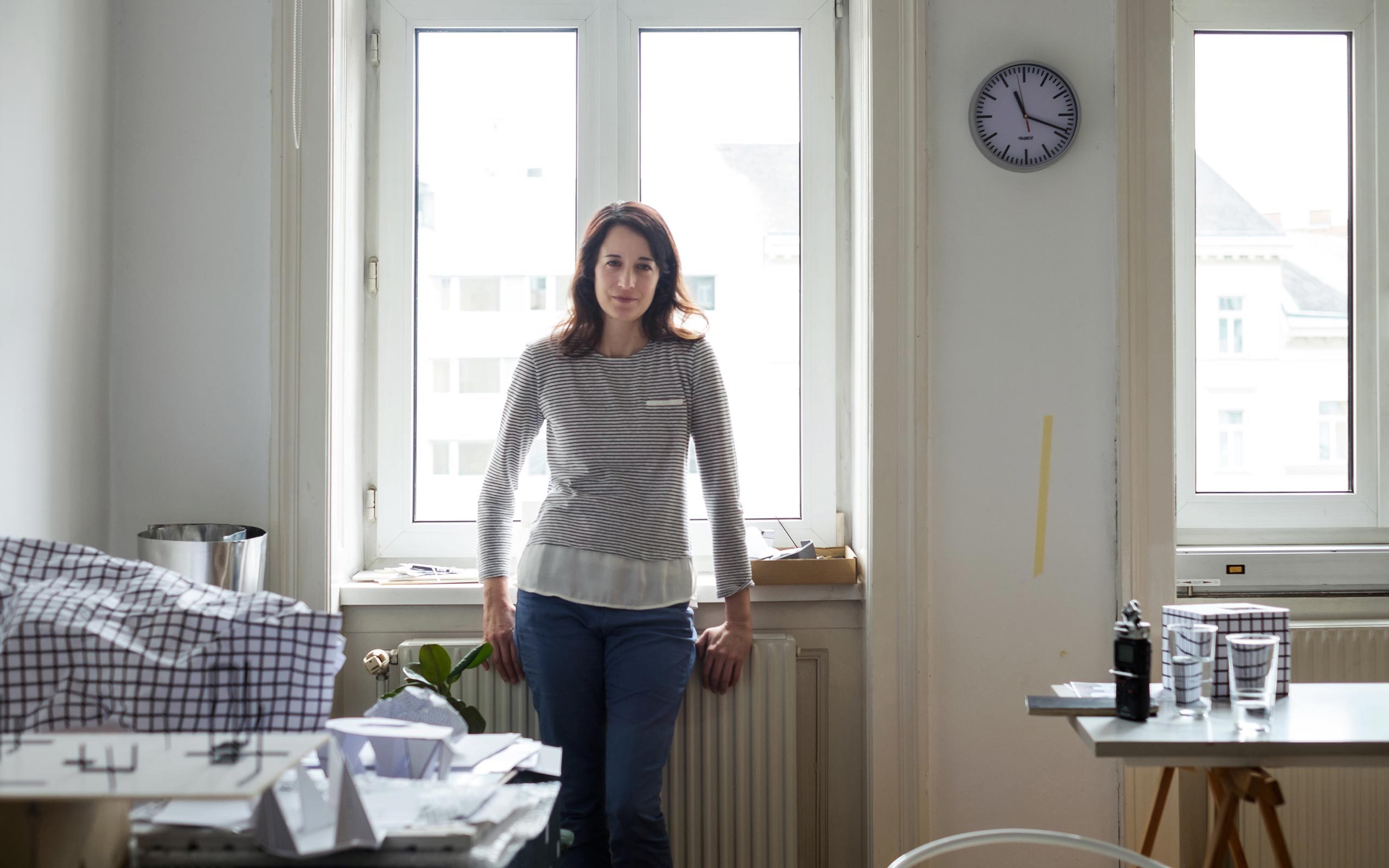
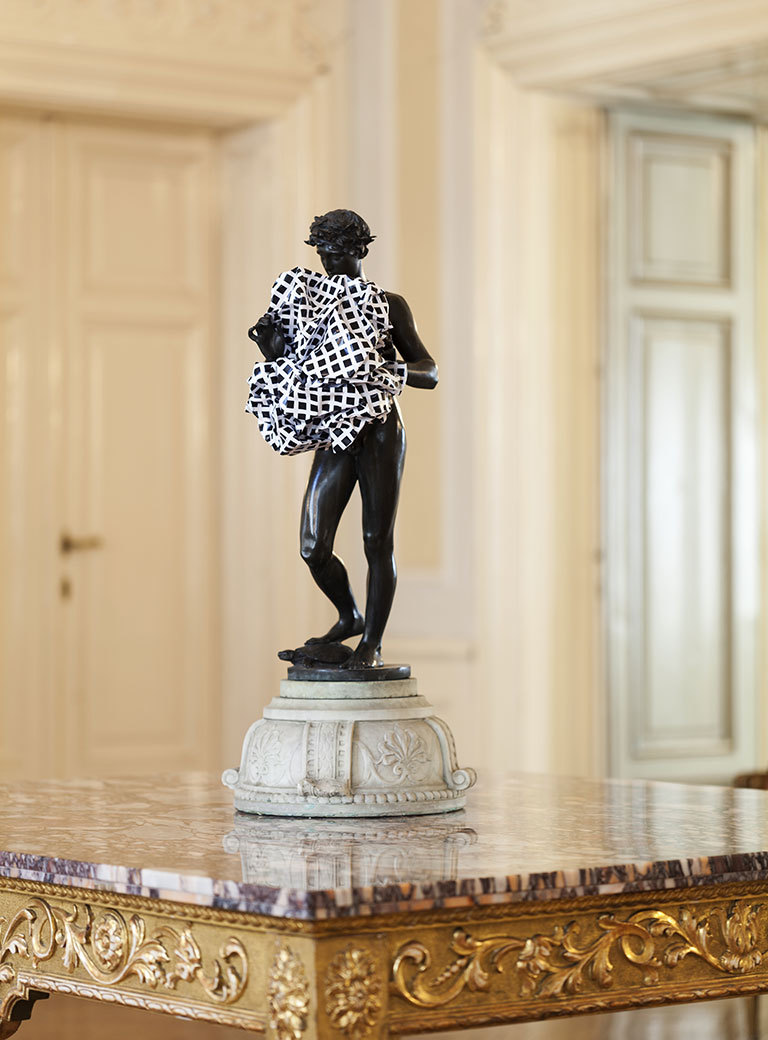
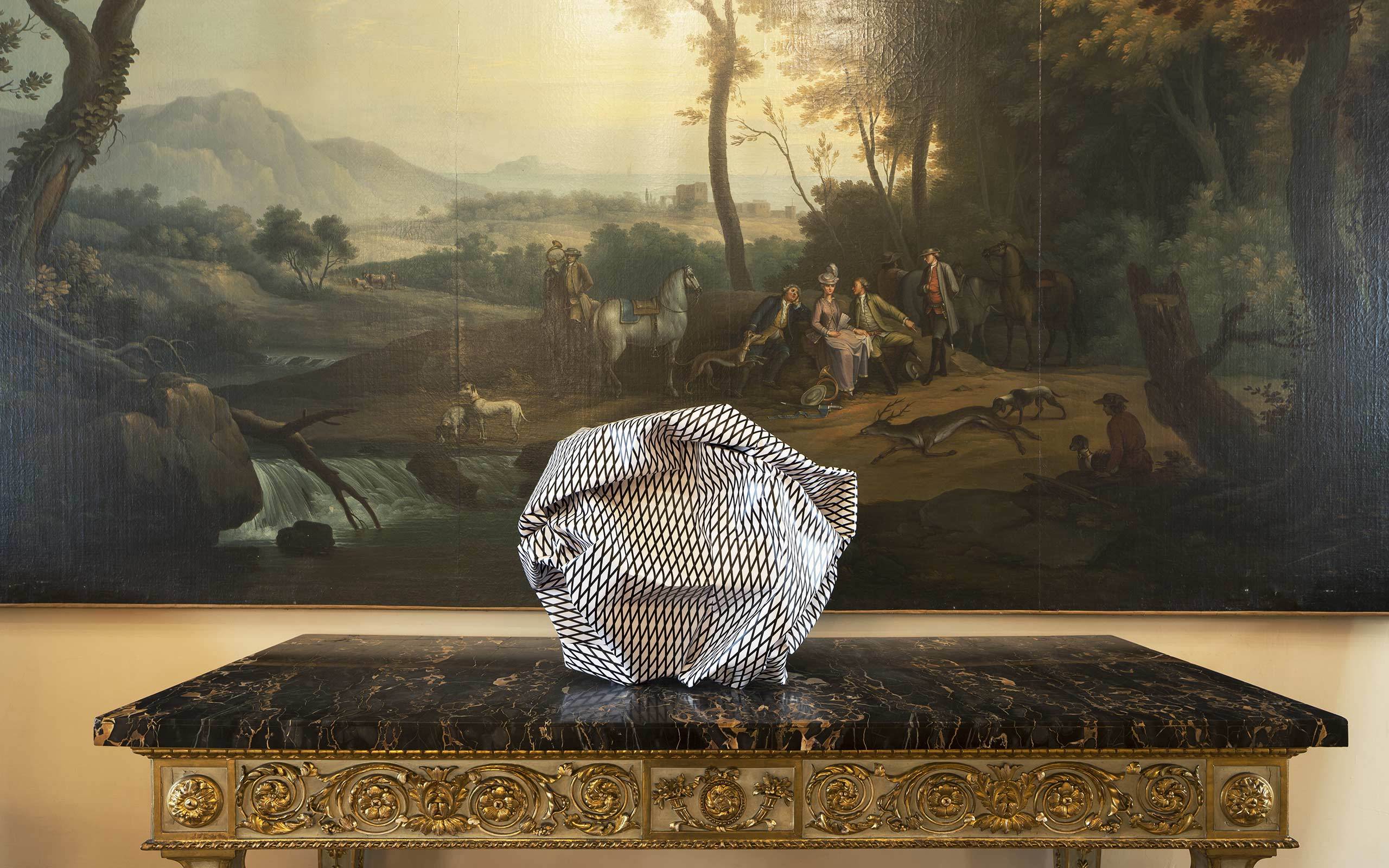
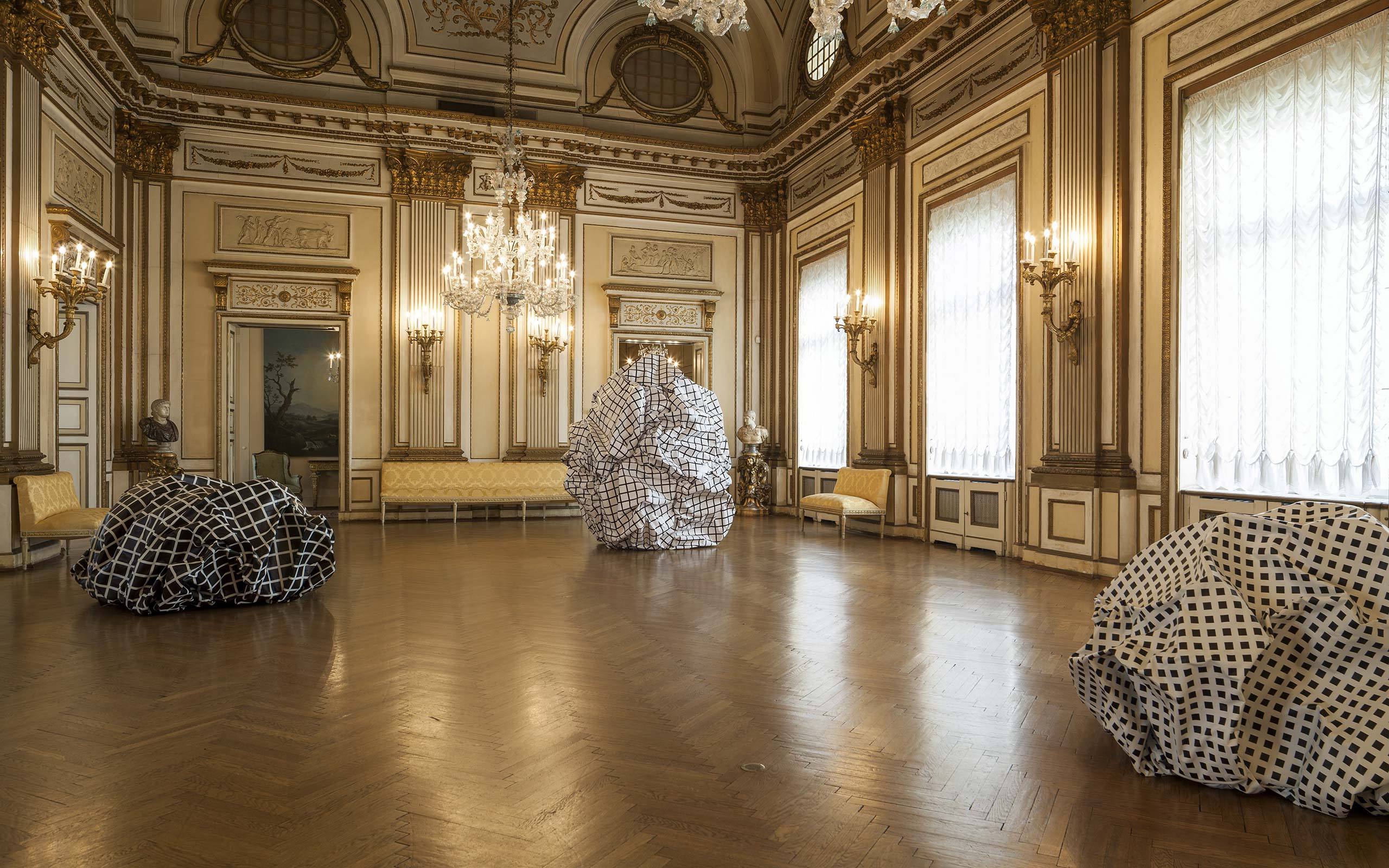
Interview: Michael Wuerges
Photos: Maximilian Pramatarov
Exhibition views: Geometrien at Palais Metternich, Vienna, 2016, curated by Marcello Farabegoli, (c) Rudolf Strobl, courtesy of the artist


